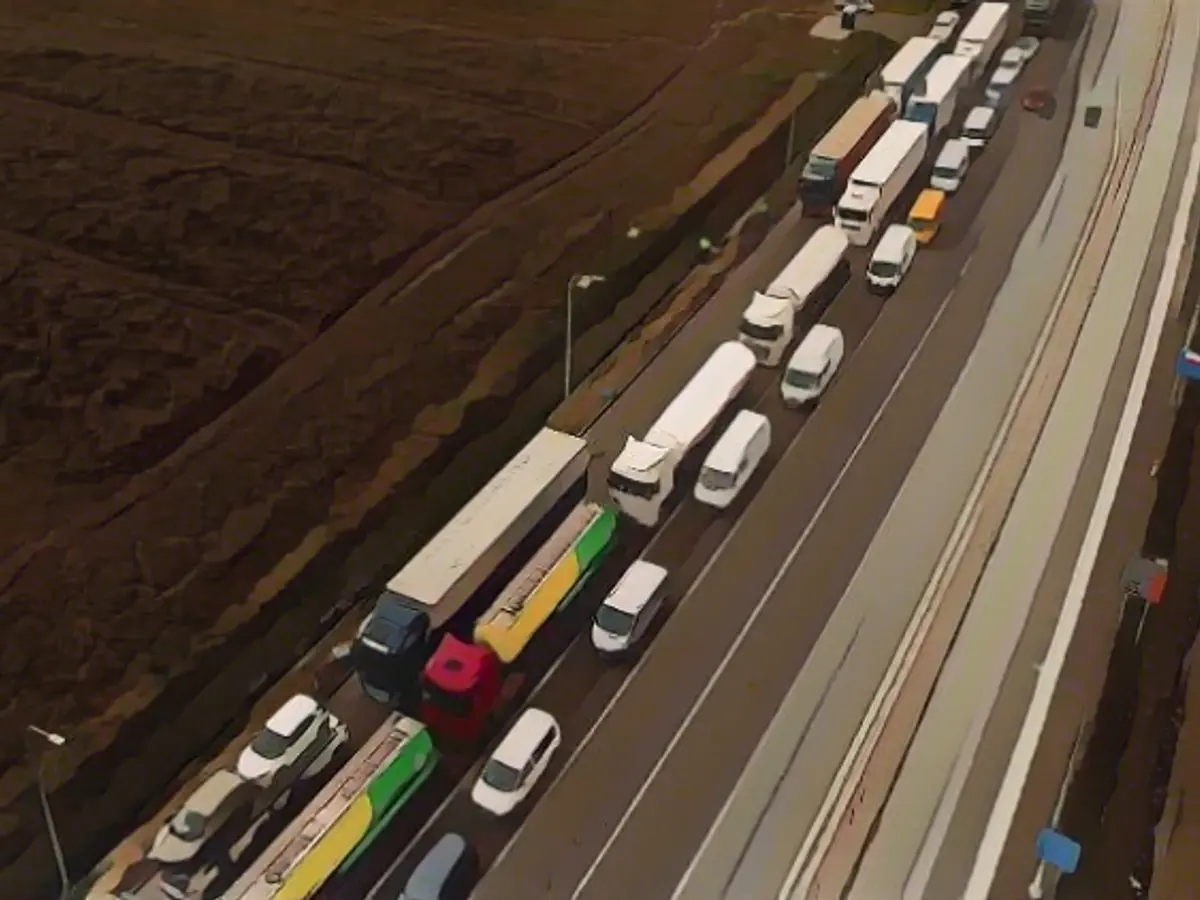More Vehicles on German Roadways
The traffic of trucks on German highways, often seen as a predictor of the economic climate, showed a slight uptick in November. According to the Federal Statistical Office, the mileage of trucks with at least four axles that are subject to tolls on federal highways increased by 1.3% compared to the previous month.
This marks the most significant increase since February. In October, there was still a decline of 1.9%, which was the steepest fall since December 2022. Compared to November 2022, the truck toll performance index has decreased by 3.7%.
Germany's leading economy has experienced setbacks after contracting by 0.1% in the summer quarter. Should there be a double-dip in the fourth quarter — if there's another quarter of decline following October — experts may classify this as a temporary recession.
Experts closely monitor truck mileage on highways as they serve as early signs of trends in the industry. Many believe that the economy won't show significant improvements until the upcoming year.
Additional Insights
The upswing in truck traffic on German highways could suggest a positive change in the near future. This might encourage more businesses to invest in transportation, necessitating more trucks. Moreover, a rising number of trucks on the highways could lead to increased demand for related services, such as fueling stations and maintenance service centers.
However, several factors influence the trajectory of truck traffic on German highways and represent broader economic trends:
Economic Growth
Strong economic activity can be reflected by increases in truck traffic, particularly in industries that rely heavily on logistics and transportation. For instance, the rise of e-commerce has led to increased demand for door-to-door delivery services, resulting in higher truck volumes.
Regulatory Environment
Stricter environmental regulations could impact truck traffic patterns. For example, the European Union's push for zero-emission road freight by 2030 may lead to a shift towards electric or hybrid trucks, potentially altering the composition of truck traffic.
Market Dynamics
Trade agreements and economic recovery efforts can influence road freight volumes. For instance, the RePowerEU program and the EU Recovery and Resilience Facility have boosted infrastructure development and supported the transition to more sustainable local transport, resulting in an increase in rigid truck volumes.
Operational Costs and Logistics
Volatile fuel prices and driver shortages can pose financial and operational challenges for the industry, potentially influencing truck traffic patterns.
These factors collectively shape the trajectory of truck traffic on German highways, offering insights into broader economic trends.
Source:
Enrichment Data
- The potential consequences and factors influencing further increases in truck traffic on German highways can be analyzed from several perspectives:
- Economic Trends and Truck Traffic
- Regulatory Environment
- Market Dynamics
- Operational Costs and Logistics
Specific Data on German Truck Traffic
- Total mileage of heavy goods vehicles (HGVs) over 3.5 tonnes on toll road infrastructure in Germany increased by 3.3% year-on-year in December 2024.
- For vehicles with a gross vehicle weight (GVW) of 7.5 tonnes or more, total truck mileage on German motorways and federal roads in 2024 decreased by 0.3%.
- The presence of international hauliers, such as Belgian, Italian, and French trucks, has a significant impact on truck traffic patterns.
These trends offer insights into the broader economic landscape, shaping the trajectory of truck traffic on German highways.








